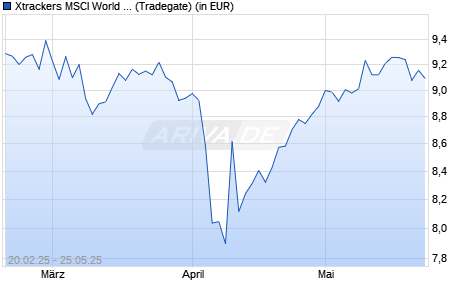What Is A Flash Flood Emergency? Definition, Causes, And Prevention

Table of Contents
Defining a Flash Flood Emergency
Definition and Characteristics
A flash flood emergency is defined as a rapid and unexpected flooding of normally dry areas. Unlike regular floods, which often develop slowly over days or weeks, flash floods have a very short warning time—often less than six hours—and can be incredibly dangerous due to their swift currents and overwhelming force. Key characteristics include:
- Rapidly rising water levels: Water levels can rise dramatically in a matter of minutes.
- Unexpected and swift current: The powerful currents can sweep away people, vehicles, and structures.
- Short warning time (often less than 6 hours): This limited timeframe makes rapid response crucial.
- Potential for significant damage and loss of life: Flash floods can cause catastrophic damage to property and infrastructure, leading to fatalities.
- Can occur in normally dry areas: Flash floods are not limited to floodplains; they can occur in areas that typically don't experience flooding.
Causes of Flash Flood Emergencies
Intense Rainfall
The most common cause of flash flood emergencies is intense rainfall over a short period. When more rain falls than the ground can absorb, and drainage systems are overwhelmed, water accumulates rapidly, leading to flash flooding. This intense rainfall can be associated with various weather events:
- Monsoon seasons: Regions with monsoon seasons are particularly vulnerable to flash flooding.
- Thunderstorms: Severe thunderstorms can produce torrential downpours in a localized area.
- Hurricane/Tropical storm rainfall: These storms often bring widespread and intense rainfall, increasing the risk of flash floods.
- Dam or levee failure: A breach in a dam or levee can unleash a sudden and catastrophic surge of water.
Other Contributing Factors
Several other factors can contribute to or exacerbate the risk of flash flood emergencies:
- Rapid snowmelt in mountainous regions: A rapid melt of accumulated snow can cause a sudden increase in water runoff.
- Failure of dams or levees: Structural failure of water retention structures can lead to devastating flash floods downstream.
- Deforestation leading to increased runoff: The removal of trees reduces the land's ability to absorb water, increasing surface runoff.
- Geological factors like steep slopes: Steep slopes accelerate water flow, increasing the speed and force of the floodwaters.
Prevention and Mitigation of Flash Flood Emergencies
Personal Preparedness
Individual preparedness is crucial in mitigating the risk of flash flood emergencies. Taking proactive steps can significantly reduce your vulnerability and improve your chances of survival:
- Develop a family emergency plan, including evacuation routes: Know where to go if a flash flood warning is issued.
- Gather emergency supplies (food, water, first-aid kit, etc.): Be prepared for potential isolation and power outages.
- Monitor weather forecasts and warnings: Stay informed about potential flash flood threats in your area.
- Know your risk level and potential flood zones: Understand if your property is located in a high-risk area.
Community-Level Measures
Community-level initiatives play a critical role in preventing and mitigating flash flood emergencies:
- Improved drainage systems and infrastructure: Investing in efficient drainage systems can reduce water accumulation.
- Floodplain management and land-use planning: Restricting development in flood-prone areas can minimize risks.
- Public awareness campaigns and education programs: Educating the public about flash flood risks and safety measures is vital.
- Early warning systems and communication networks: Effective communication systems are essential for timely warnings and evacuations.
Recognizing the Signs of a Flash Flood Emergency
Recognizing the signs of an impending flash flood is crucial for timely action. Be vigilant and look for:
- Rapidly rising water levels: A noticeable and sudden increase in water levels in streams, rivers, or low-lying areas.
- Debris flowing downstream: Unusual amounts of debris carried by swift currents indicate a potential flash flood.
- Changes in water color or sounds: Muddy water or an unusual roaring sound from a normally quiet stream can be warning signs.
- Emergency alerts and warnings: Pay close attention to official warnings issued by weather services and emergency management agencies.
Conclusion
Flash flood emergencies are sudden, dangerous events characterized by rapidly rising water levels and limited warning time. Understanding their causes, from intense rainfall to other contributing factors, is crucial for effective prevention. By developing a personal emergency plan, staying informed about weather forecasts, and supporting community-level initiatives, you can significantly reduce your risk and protect yourself and your community. By understanding what constitutes a flash flood emergency and taking appropriate preventative measures, you can significantly reduce your risk and protect yourself and your loved ones. Learn more about flash flood safety and create your emergency plan today! Take steps towards flash flood preparedness and preventing flash floods in your area.

Featured Posts
-
 Did Woody Allen Abuse Dylan Farrow Sean Penn Weighs In
May 25, 2025
Did Woody Allen Abuse Dylan Farrow Sean Penn Weighs In
May 25, 2025 -
 Frankfurt Stock Market Report Dax Closes Under 24 000
May 25, 2025
Frankfurt Stock Market Report Dax Closes Under 24 000
May 25, 2025 -
 Ultima Hora Fallecimiento De Eddie Jordan
May 25, 2025
Ultima Hora Fallecimiento De Eddie Jordan
May 25, 2025 -
 Amundi Msci World Ex Us Ucits Etf Acc Nav Calculation And Implications
May 25, 2025
Amundi Msci World Ex Us Ucits Etf Acc Nav Calculation And Implications
May 25, 2025 -
 Why Did Trump Attack European Trade A Deep Dive Into His Policies
May 25, 2025
Why Did Trump Attack European Trade A Deep Dive Into His Policies
May 25, 2025
